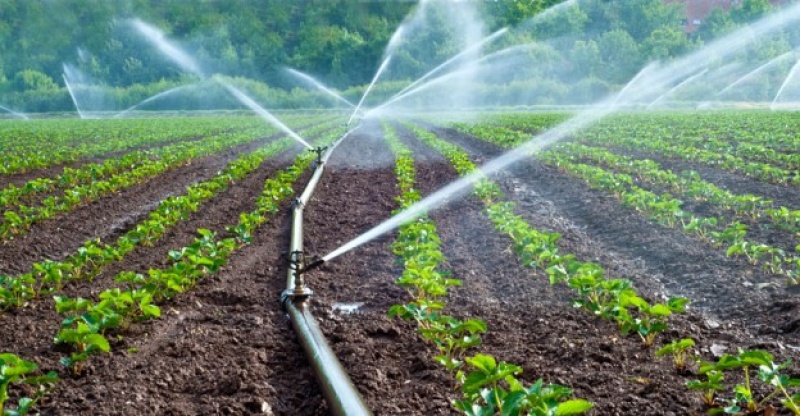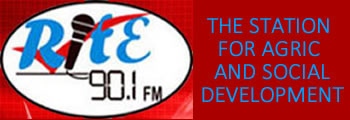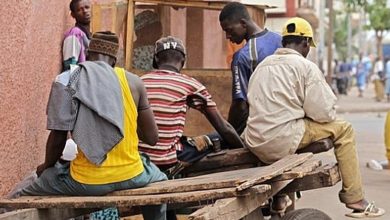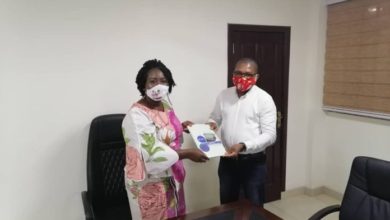One village, one dam policy a must

The Upper West Region is largely an agrarian region with about 70 per cent of the population including women engaged in the agricultural sector.
Despite this, farmers in the Region depend on rain fed agriculture using traditional technologies that do not support 21st century commercial agriculture.
Due to this, majority of the peasant farmers are engaged in subsistence agriculture, and this has inflicted poverty on the people and making the region to assume the position as the poorest region in Ghana.
As a result, the citizens mostly the youth often migrate to the south in search of menial jobs to survive usually under very bizarre conditions.
This has called for concern from all including civil society organisations, non-governmental organisations (NGOs), development partners and past governments who have implemented various agricultural policies with the aim to turning around the fortunes of the sector in order to lift the people out of poverty.
The Food and Agriculture Sector Development Policy is one of the major policy documents of the Ministry of Food and Agriculture that has the key objective of ensuring food security and emergency preparedness.
Under this, activities such as the Block Farming, the Rice Sector Support project, the Livestock Development project and the Agriculture Mechanisation centres were implemented with the aim of transforming the sector for good.
Also among the lot was the Northern Rural Growth Programme, which seeks to provide farm access roads, warehouses and support to dry season irrigation in addition to others.
All these policies, programmes and activities have achieved results but the problem of the agricultural sector still persists as hunger and poverty still remains visible while youth migration to the south is still a reality.
Education is affected as poverty will not allow people to send their children to school, as well as health as people are not getting the right nutritional values to stay healthy.
It was therefore a welcoming news for many when the then presidential candidate Nana Addo Dankwa Akufo- Addo promised the “One village, one dam” policy to ensure an all-year-round agriculture in the Northern, Upper East and the Upper West Regions during the 2016 general election.
Many were those who lauded the policy and said if well implemented could help revolutionise agriculture in the area and the country at large.
However, there are skeptics who do not believe in the feasibility of the policy, arguing that per the topography of the three beneficiary regions it is not possible to have one dam in every village.
The Upper West Region is located in one of the harsh climatic zones that are characterised by severe climate change impact such as prolonged droughts and floods.
Rainfall often starts from July/August and ends in September/October; three months with annual rainfall values ranging from 1000-1200 millimeters.
Most smallholder farmers in the Region are currently constrained by the negative impact of climate change such as unreliable rainfall patterns, shrinking rainy season, food and nutrition insecurity, recurrent floods, drought and the degradation of soil quality.
To increase food production in the Region, there should be a paradigm shift from rain-fed agriculture to irrigated agriculture through the construction of dams/dugouts and associated ancillary works such as canals, laterals and ponds among others.
Based on the harsh climatic conditions and its impact in the Region, irrigation schemes are of significant importance to the people.
This is because it will help promote all-year-round agriculture, promote livestock and aquaculture, provide jobs for the people during the lean season and reduce the rural-urban drift of the youth to the cities for greener pastures.
Mr Richard Oppong-Boateng, Regional Manager of the Ghana Irrigation Development Authority (GIDA) said currently, the Region has about 200 dams and dugouts spread across various communities in all the 11 districts.
He noted that about 36 of these dams had irrigation canals some of which were having challenges.
Technically, Mr Oppong-Boateng explained that whereas dams could be used for both gravity and pumping irrigation, dugouts could only be used for pumping irrigation.
He said the Region was blessed with abundant water resources such as the Black Volta, Kulpawn, Kamba, Kombili, Kunnyukuon, Kulung and Ambalaara.
Mr Oppong-Boateng said the area had about 20 well defined valleys and about 1.2 million hectares of arable land.
He said the Region could also benefit from a good number of culvert diversion weirs along the Wa-Bole, Wa-Hamile and Wa-Tumu highways.
He said per available water resources, it was feasible to have one dam or a dugout in every village in the Region.
He said any dam/dugout that stored less than three meters cube water column could not suffice the eight month drought due to the high evaporation rate.
He therefore recommended that any dam to be constructed in the Region should be designed such that it stored water above the three meters cube column.
On the non-utilisation of dams in the Region, Mr Oppong-Boateng said it was as a result of the siting of dams by NGOs and other development partners without the involvement of GIDA.
He said poor siting of dams and dugouts resulted in low inflows from the catchment areas, and shallow dams/dugouts which were less than three meters cube often dry out during the drought period from November to May.
Other challenges include poor maintenance culture by farmers and other users as well as lack of collaboration between funding agencies, NGOs and GIDA, he said.
He listed four interventions, which if adopted could help make the Region the food basket of the country.
One of such interventions is the construction of large scale irrigation projects such as the proposed Kamba and Black Volta Irrigation projects.
Others are the construction of mini dams such as the Sankana, Siiru, Baleufilli and Busa dams and additionally the provision of culvert diversion weirs such as the Wadih, Ga and Poyentanga dams.
Last but not the least intervention is the drilling of boreholes to irrigate about two hectares for smallholder farmers and rain water harvesting into tanks or storage reservoirs for backyard gardening.
Through the Ghana Social Opportunities Project, GIDA supervised the construction of about 75 dugouts beginning from 2012 to 2017.
Based on the potential of water resources, GIDA is therefore planning to identify and develop two medium or large scale irrigation projects in each district.
The population of the Region according to 2010 Population and Housing Census stands at 702,110 with 341,182 male and 360,928 female.
The Region also has a total of 1,140 communities.
This means that if all the 200 dams and dugouts can be located in 200 communities then there will be a gap of 940 communities for the one village, one dam policy.
However, Mr Oppong-Boateng hinted that the potential exist for one to three communities to benefit from one large scale dam that could still serve their needs effectively.
He said communities with very little population could benefit from a mechanised borehole with irrigation facilities.
Indeed, if the one village, one dam policy is to succeed and help transform the agriculture sector in the beneficiary regions and the country at large, then the mandate and the necessary logistical and financial resources he believed should be channeled through GIDA.
This is because, GIDA has the technical expertise in dam construction coupled with its presence and comprehensive understanding of the area’s water resource dynamics.
Lessons from the Savannah Accelerated Development Authority are there to guide us and we should not stop referring to them in order to correct the future.
Mistakes that were committed at the beginning of the programme could have been avoided if the technical people were allowed to handle the programme.
Of course, the one village, one dam per many people is feasible; however lack of political will to provide the needed logistical and financial resources could pose as a challenge to the success of the policy.
Community sensitisation on the policy objectives is very critical to its success because an ignorant community would only lead to lack of community ownership, thereby leading to waste of resources.
This, among other giant promises of the government, if effectively implemented would not only help change the lives of people in the area but would remain a very robust legacy of the Nana Akufo- Addo led government to the people of the North.
An all-year-round farming in the north is one big dream that has been lingering in the hearts of people in the area for decades and he believes the one village, one dam policy will be the panacea to achieving that then it is most welcome.
credit:gardja.org



